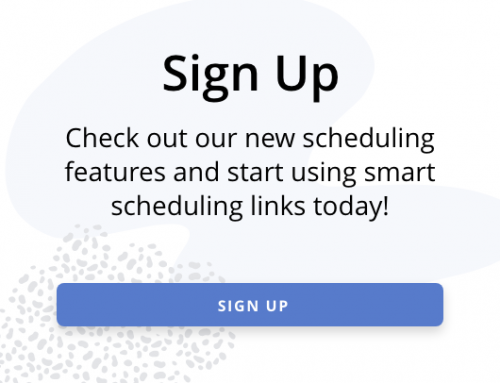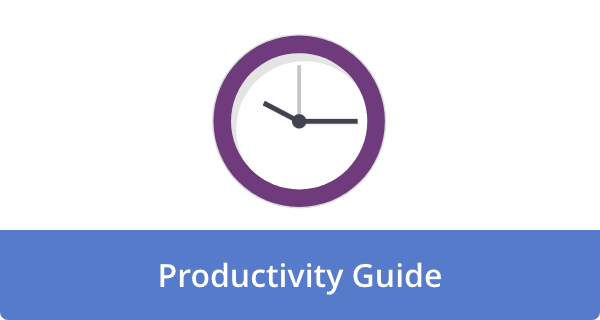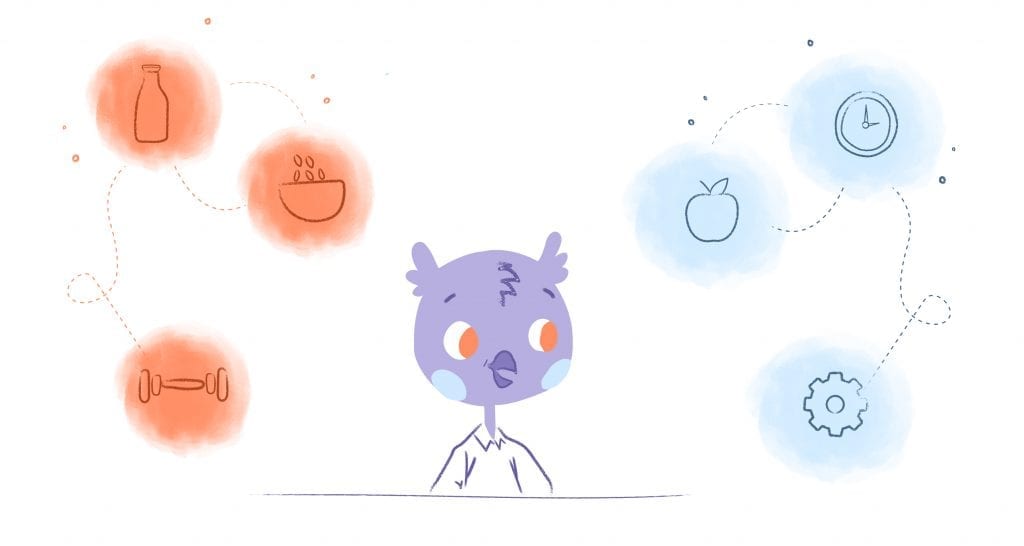

Winter gets into your daily routine and throws everything off kilter. Less daylight, colder temps, and unpredictable weather make even the simplest tasks feel like mountain climbing.
Whether it’s waking up in the dark or bundling the kids for school, winter requires a touch more effort to be productive. The good news? You can beat these winter productivity killers with a few simple tweaks to your schedule and habits.
Let’s look at eight winter obstacles and how you can manage them to stay productive.
1. Lethargy, Sleep, and Environment Control
With shorter days and longer nights, it’s not unexpected that your body’s natural rhythm will feel off. When natural daylight starts dwindling sooner in the day, it can lead you to feel sleepy sooner and lessen your overall productivity. This can happen both at home and at work.
The key is to manipulate indoor light to your advantage.
You should strategically place ambient mood lights around your home or office to mimic the effect of natural daylight. Doing this can help your environment maintain a certain level of brightness and help your body feel more consistent until it’s actually time to start winding down for sleep.
Once that time comes around, it’s important to listen to your body. You should by no means force yourself to stay awake longer than you regularly do by controlling the light in your home. Go to bed earlier if you’re feeling exhausted. Keeping a consistent sleep schedule improves focus and productivity even in the darker months.
Bonus tip: Don’t look at your phone before bed. The blue light can disturb the hormones necessary for deep, restorative sleep.
2. Cold Weather Prep
The layers, the boots, the endless search for hats—it’s a lot. Dressing for the cold takes more time than you think, and not factoring it into your routine can lead to rushed mornings or missed deadlines.
The key here is adding more time to your morning routine.
Lay out your outfit (and the kids’) the night before. Make sure winter gear—like gloves and scarves—has a designated spot in your home so there’s no frantic searching before you head out. Keeping an updated calendar can help you allocate those extra minutes wisely. Tools like Calendar, Microsoft Calendar, or Google Calendar make it easy to plan out your mornings and set reminders.
3. Longer Commutes
Winter weather means icy roads and delayed transit. These conditions can easily throw off your schedule if you’re not prepared. And worse, people will often attempt to make up for the lost time by brushing off their car of snow, leading them to drive more recklessly in already–terrible driving conditions.
The solution here is to plan accordingly by giving yourself enough time — don’t rush.
Always check the weather forecast the night before your commute. It won’t always be perfect, but it can give you a realistic sense of what to expect the next morning and how you ought to prepare.
If the snowfall looks really bad, and driving conditions look too treacherous, then you ought to communicate a work-from-home alternative solution with your employer, if possible.
Speaking of working from home, let’s take a closer look at how to optimize an at-home work schedule when the weather keeps you from commuting.
4. Work-from-Home Challenges
Snow days aren’t just for kids anymore. Bad weather can force you to stay home and blur the lines between work and personal life—especially if the kids are home too.
Always have a plan B in the winter months.
Use your calendar to schedule specific work hours and share your availability with colleagues. If the kids are home, set boundaries. Designate a workspace and encourage independent activities for your kids. Don’t forget to schedule breaks—it’s easy to lose track of time when working from home.
5. Outdoor Maintenance
From shoveling snow to salting the driveway, the list of winter chores can mount up. What makes these already unpleasant tasks more difficult is that they usually require attention immediately and can throw off your routine if not planned for in advance.
The trick is to prioritize outdoor maintenance ahead of time and strategically.
For instance, if you wake up and see the snow is still coming down, it may be more worth your time to hold off shoveling or snow plowing until the snow has stopped. That way, you won’t find yourself back out there later in the same day having to repeat the work you just completed earlier that morning. It’s one thing if you have no other option, but if the accumulation is light enough, consider waiting.
Additionally, it’s wise to winterize outdoor spaces in advance—cover faucets, clean gutters, and turn off outdoor water features.
Pro tip: Store your winter tools in a convenient spot indoors, like a mud room, so you’re not digging through the garage in freezing temperatures.
6. Keeping Kids on Track (skip this step if you don’t have kids)
Winter means more time indoors, which can lead kids to be a bit more rowdy than usual. Add in snow days and early dismissals, and you’ll have a recipe for pent-up energy.
If you have kids, a great suggestion to consider is to create a flexible but structured routine for your kids.
Plan indoor activities to keep them occupied—crafts, puzzles, or reading time. If they’re old enough, involve them in winter chores—it’s a great way to teach responsibility and keep them busy. Use your calendar to coordinate school closures and extracurricular activities so you’re never caught off guard.
7. Cabin Fever
Spending more time indoors can make you feel restless and unmotivated. Cabin fever can even make the most disciplined person struggle to stay focused.
In any and all ways possible, you’ll want to change your environment as often as you can.
Rearrange your workspace furniture, add a plant, or light a candle to make your space cozier, kick on some music, or shift your workspace entirely to a different room. Schedule virtual coffee chats with friends or colleagues to break up the monotony. And when you’re feeling especially stuck, step outside for a quick blast of fresh air.
Even a few minutes of change can reset your mind.
8. Staying Motivated During Winter Slumps
The cold weather and shorter days can drain your motivation and make it hard to get into task mode with your usual zest. This “winter slump” is normal and affects both personal and professional productivity.
The thing you ought to prioritize here is finding ways to get motivated again.
Break your work into smaller, more achievable tasks so you feel like you can accomplish something. Use rewards to incentivize yourself—finish a task and treat yourself to something small like a hot drink or a quick break.
Surround yourself with positive influences, whether that’s uplifting music, motivational podcasts, or a vision board with your goals for the year. Most importantly, practice self-compassion.
Some days will be harder than others, but that’s okay. A steady pace, even in winter, will get you inspired and moving.
Winter Might Be Tedious, But It Can Also Be Manageable
Winter productivity challenges are inevitable but not impossible. If you make a few tweaks to your routine, you can easily maintain consistency with your schedule even when it’s snowing sideways. Remember, calendar tools can help you plan and stay organized no matter the season you’re in.
Featured Image Credit:











Angela Ruth
My name is Angela Ruth. I aim to help you learn how Calendar can help you manage your time, boost your productivity, and spend your days working on things that matter, both personally and professionally. Here's to improving all your calendars and becoming the person you are destined to become!